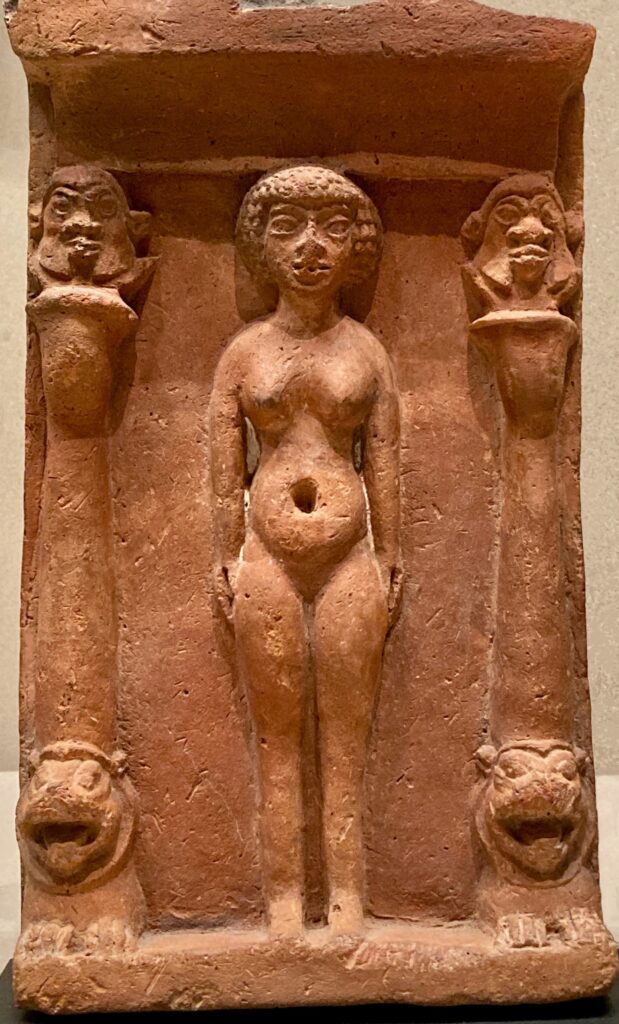I went to the Museum of Fine Arts in Boston yesterday (in part so I could take advantage of their air conditioning on a steamy, stormy day). Major art museums in the West tend to be strange places, because they are typically full of deities from many different cultures. We in the West may have eradicated deities from our homes, and it looks like we’re in the process of slowly eradicating our public places of worship — but we like to salvage a handful of deities from all the cultures we’ve colonized, purify them of their religiosity by calling them “art,” and putting them in glass cases. Such is the trajectory the colonization of religion.
A small household shrine made of terracotta caught my eye. From Phoenicia in the seventh or sixth century before the Common Era, the shrine contains the goddess Astarte. Astarte was a goddess from Canaan. Some sources say that she was merged with, or took over from, the earlier Canaanite goddess Anat, a fierce goddess of fertility and war. Other sources say Astarte traces her origins back to the Mesopotamian goddess Ishtar. Still other sources relate her to Esther, or to Aphrodite. There was plenty of cultural borrowing in the Ancient Near East.
King Solomon is taken to task in the Hebrew Bible because he worshiped Astarte, among other deities: “Solomon followed Astarte the goddess of the Sidonians… So Solomon did what was evil in the sight of the Lord, and did not completely follow the Lord, as his father David had done” [1 Kings 11:5-6]. One of Jeremiah’s jeremiads was against Astarte. The Shalvi/ Hyman Encyclopedia of Jewish Women has a brief article on Astarte that’s worth reading, and that concludes by saying: “Although our sources do not provide enough information to identify definitively which Israelites were particularly attracted to the worship of Astarte or the reasons for their attraction, it is possible that some devotees were compelled by the presence of a female divine figure in an otherwise male-dominated religious environment.” You can learn a great deal more about Astarte in the Bible in the essay “Astarte in the Bible” by Stephanie Anthonioz, in David T. Sugimoto, ed., Transformation of a Goddess: Ishtar — Astarte — Aphrodite (Academic Press Fribourg, 2014).
But the Phoenicians apparently had no compunctions about worshiping Astarte. This small sculpture shows her nude, as if she were Ishtar. She is given an Egyptian headdress, and the columns on either side of her are topped with depictions of the Egyptian god Bes. She is, if you will, a multicultural goddess. This is not entirely surprising, given who the Phoenicians were. They were merchants and sailors, and they traded throughout the Mediterranean Sea and beyond, perhaps sailing even as far as Britain. No wonder, then, that they worshiped multicultural deities.

(Boston Museum of Fine Arts, 1990.605)
